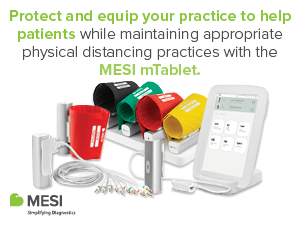-
PRODUCTS
- Anaesthesia & Respiratory
- Anaesthesia and Respiratory
- Baby
- Casting
- Continence Care
-
Diagnostic
- See all Diagnostic
- Accessories
- Bladder Scanner
- Blood Testing
- Breathalyzer
- Cholesterol Testing
- Covid Testing
- Dermatoscope
- Diabetes Monitoring
- Drug Testing
- Endoscopy
- Eye Ear Nose & Throat
- Height Measures and Charts
- INR
- Jars and Containers
- Medical and Surgical Instruments
- Parts and Accessories
- Scales
- Testing
- Urinalysis
- Womens Health
- Ear Irrigation
-
Equipment
- See all Equipment
- "Miscelllaneous, Parts and Accessories"
- Beds
- Blood Collection Chair
- Bracket & Dispensers
- Carts & Trolleys
- Cryosurgery
- Electrosurgery
- Examination Couches & Tables
- Fridge & Freezers
- IV Stands
- Laundry & Cleaning Trolleys
- Play Panels
- Privacy Screens and Curtains
- Stools and Step Ups
- Stools, Bed Screens & IV Stands
- Tens
- Transferring & Patient Handling
- Waste Disposal
- X-Ray Viewers
-
General Consumables
- See all General Consumables
- "Couch Rolls, Protectors & Underpads"
- "Registers, Records and Certificates"
- Bags Assorted
- Batteries
- Blankets and Warmers
- Bracket
- Child Rewards
- Containers
- Cups
- Dental Film Process Products
- Dr Bags
- Ear Piercing
- Feminine Hygiene
- First Aid and Trauma
- Gels and Lubricants
- Identification
- Linen
- Marker
- Miscellaneous
- Ostomy
- Paper and Printing Consumables
- Paper Products
- Parts and Accessories
- Personal Care
- Pill Cutters and Crushers
- Ultrasound Gel
- Wooden Applicators
- Gloves
- Hand & Body Hygiene
-
Infection Prevention & Control
- See all Infection Prevention & Control
- Absorbent Powder
- Bedpans & Urinals
- Caps
- Clinical Sheets
- Containers
- Dispensers
- Eye Protection
- Face Masks
- Hand Hygiene
- Miscellaneous
- Parts & Accessories
- Protective Apparel
- Scrubs
- Spill Kit
- Surface Cleansers & Wipes
- Surgical Packs & Drapes
- Toileting & Waste Disposal
- Tray Liners
- Wipes and Skin Protection
- Intravenous Infusion & Administration
-
Medical & Surgical Instruments
- See all Medical & Surgical Instruments
- Biopsy Punch
- Chiropody Pliers & Podiatry
- Cleaning and Protection
- Curettes
- Dental Syringe
- Dilator
- Ear Irrigation
- Forceps
- Hammer
- Male Health
- Marker
- Miscellaneous
- Nasal Speculum
- Needle Holder
- Pack
- Probe
- Retractor
- Ring Cutter
- Scalpel Handles & Blades
- Scissors
- Skin Hook
- Sucker
- Tuning Forks
- Urology
- Uterine Curettes & Sounds
- Medical Lighting
- Medical Lighting
- Needles & Syringes
- Nutritional Support
- Oral Care
- Patient Monitoring
-
Pharmaceuticals
- See all Pharmaceuticals
- Alimentary
- Anaesthetic
- Analgesia
- Antihistamines
- Cardiovascular
- Central Nervous System
- Creams and Ointments
- Endocrine & Metabolic
- Eye Ear Nose & Throat
- Infections & Infestations
- Miscellaneous
- Musculoskeletal
- Nutrition
- Ointment Products
- Other
- Register
- Respiratory
- Skin
- Solutions
- Rehabilitation & Mobility
- Skin Care
- Sports & Recovery
-
Sterilisation
- See all Sterilisation
- Autoclaves
- Biological Indicators and incubators
- Chemical Indicator Tapes
- Chemical Indicators and Integrators
- Cleansing Solutions & Detergents
- Instrument Protector
- Labels
- Marker
- Paper and Printing Consumables
- Parts & Accessories
- Record Keeping Supplies
- Steam Indicator Sheets and Tests
- Sterilisation Pouches & Rolls
- Towels and Cloths
- Trays and Bowls
- Ultrasonic Cleaners
- Water
- Wraps
- Sutures & Skin Closures
- Urology
- Vaccines
- Wound Care
- Wound Management
- News & Updates

Diagnosing PAD on Diabetic Patients
Peripheral Arterial Disease (PAD) is more common in patients with diabetes, and around half of patients with a diabetic foot ulcer have coexisting PAD1-3. PAD is defined as any atherosclerotic arterial occlusive disease below the level of the inguinal ligament, resulting in a reduction in blood flow to the lower extremity.
PAD in diabetes is a condition predominantly of the infra‐inguinal vasculature and is distinct from that in patients without diabetes in its characteristics, treatment and outcomes. Identifying PAD among patients with foot ulceration is important because its presence is associated with worse outcomes, such as a slower (or lack of) healing of foot ulcers, lower extremity amputations, subsequent cardiovascular events and premature mortality4,5. Diagnosing PAD is challenging in patients with diabetes, as they frequently lack typical symptoms, such as claudication or rest pain, even in the presence of severe tissue loss1,6,7. Arterial calcification8-10, foot infection, oedema and peripheral neuropathy, each of which is often present with diabetic foot ulceration, may adversely affect the performance of diagnostic tests for PAD.
When clinicians diagnose PAD, they should consider its potential adverse effects on ulcer healing and risk of amputation. For each patient, the clinician should estimate the potential for infection resolution, wound healing and avoidance of amputation by balancing the severity of the perfusion deficit and the perfusion required for good outcomes11. The amount of blood flow required is affected by factors such as the presence of infection, extent of tissue loss and abnormal mechanical loading of the foot during walking.
Diagnosis
Which symptoms and signs (clinical examination) should clinicians examine for in a patient with diabetes in order to identify or exclude Peripheral Artery Disease?
- Examine a patient with diabetes annually for the presence of PAD with MESI ABPI MD; this should include, at a minimum, taking a history and palpating foot pulses.
- Evaluate a patient with diabetes and a foot ulcer for the presence of PAD with MESI ABPI MD. Determine, as part of this examination, ankle or pedal Doppler arterial wave forms; measure both ankle systolic pressure and systolic ankle brachial index (ABI).
These recommendations are in line with other international guidelines on the management of diabetes, recommending yearly screening for PAD in subjects with diabetes.12
Symptoms and signs of PAD, such as claudication, absent pulses and a low ABI, were identified as predictors of future ulceration in a recent systematic review.13
Patients with diabetes and these signs of PAD should be reviewed on a regular basis by a member of a specialist foot care team. Moreover, individuals found to have PAD have an elevated risk of other cardiovascular diseases, necessitating strategies to address these problems as well.14
Up to 50% of the patients with diabetes and a foot ulcer have PAD, and these patients have been consistently shown to be at increased risk for failure to heal the ulcer and lower‐limb loss.4,15 Identification of the patient with PAD is essential to optimise management of the foot ulcer and in undertaking other measures to mitigate cardiovascular risk.16 Patients should be informed that they have PAD and that it confers an increased risk to their foot.
Which diagnostic procedure, alone or in combination, has the best performance in diagnosing or excluding Peripheral Artery Disease in an asymptomatic person with diabetes?

3. We recommend the use of non‐invasive tests to exclude PAD such as MESI ABPI MD.
4. Measuring ABI (with <0.9 considered abnormal) is useful for the detection of PAD. Tests that largely exclude PAD are the presence of ABI 0.9–1.3, toe brachial index ≥0.75 and the presence of triphasic pedal Doppler arterial waveforms.
-
References
1. Prompers, L, Huijberts, M, Apelqvist, J, et al. High prevalence of ischaemia, infection and serious comorbidity in patients with diabetic foot disease in Europe. Baseline results from the Eurodiale study. Diabetologia 2007; 50: 18– 25.
2. Jeffcoate, WJ, Chipchase, SY, Ince, P, Game, FL. Assessing the outcome of the management of diabetic foot ulcers using ulcer‐related and person‐related measures. Diabetes Care 2006; 29:1784– 1787.
3. Beckert, S, Witte, M, Wicke, C, Köngsrainer, A, Coerper, S. A new wound‐based severity score for diabetic foot ulcers. Diabetes Care 2006; 29: 988– 992.
4. Prompers, L, Schaper, N, Apelqvist, J, et al. Prediction of outcome in individuals with diabetic foot ulcers: focus on the differences between individuals with and without peripheral arterial disease. The EURODIALE study. Diabetologia 2008; 51: 747– 755.
5. Elgzyri, T, Larsson, J, Thörne, J, Eriksson, KF, Apelqvist, J. Outcome of ischemic foot ulcer in diabetic patients who had no invasive vascular intervention. European Journal of Vascular and Endovascular Surgery 2013; 46: 110– 117.
6. Dolan, NC, Liu, K, Criqui, MH, et al. Peripheral artery disease, diabetes, and reduced lower extremity functioning. Diabetes Care 2002; 25: 113– 120.
7. Boyko, EJ, Ahroni, JH, Davignon, D, Stensel, V, Prigeon, RL, Smith, DG. Diagnostic utility of the history and physical examination for peripheral vascular disease among patients with diabetes mellitus. Clin Epidemiol 1997; 50: 659– 668.
8. Edmonds, ME, Morrison, N, Laws, JW, Watkins, PJ. Medial arterial calcification and diabetic neuropathy. British Medical Journal 1982; 284: 928– 930.
9. Chantelau, E, Lee, KM, Jungblut, R. Association of below‐knee atherosclerosis to medial arterial calcification in diabetes mellitus. Diab Res Clin Pract 1995; 29: 169– 172.
10. Aboyans, V, Ho, E, Denenberg, JO, Ho, LA, Natarajan, L, Criqui, MH. The association between elevated ankle systolic pressures and peripheral occlusive arterial disease in diabetic and nondiabetic subjects. Journal of Vascular Surgery 2008; 48: 1197– 1203.
11. Mills, JL, Conte, MS, Armstrong, DG, et al. The Society for Vascular Surgery Lower Extremity Threatened Limb Classification System: risk stratification based on wound, ischemia and foot infection (WIfI). Journal of Vascular Surgery 2014; 59: 220– 234.
12. International Diabetes Federation Guideline Development Group. Global guideline for type 2 diabetes. Diabetes Research and Clinical Practice 2014; 104: 1– 52.
13. Monteiro‐Soares, M, Boyko, EJ, Ribeiro, J, Ribeiro, I, Dinis‐Ribeiro, M. Predictive factors for diabetic foot ulceration: a systematic review. Diabetes/Metabolism Research and Reviews 2012; 28:574– 600.
14. Norgren, L, Hiatt, WR, Dormandy, JA, et al. Intersociety consensus for the management of peripheral arterial disease (TASC II). J Vasc Surg 2007; 45( Suppl S): S5– S67.
15. Apelqvist, J, Elgzyri, T, Larsson, J, Löndahl, M, Nyberg, P, Thörne, J. Factors related to outcome of neuroischemic/ischemic foot ulcer in diabetic patients. Journal of Vascular Surgery 2011; 53:1582– 1588.
16. Young, MJ, McCardle, JE, Randall, LE, Barclay, JI. Improved survival of diabetic foot ulcer patients 1995–2008: possible impact of aggressive cardiovascular risk management. Diabetes Care2008; 31: 2143– 2147.
Newsletter
Please enter your email address to subscribe to our newsletters.



